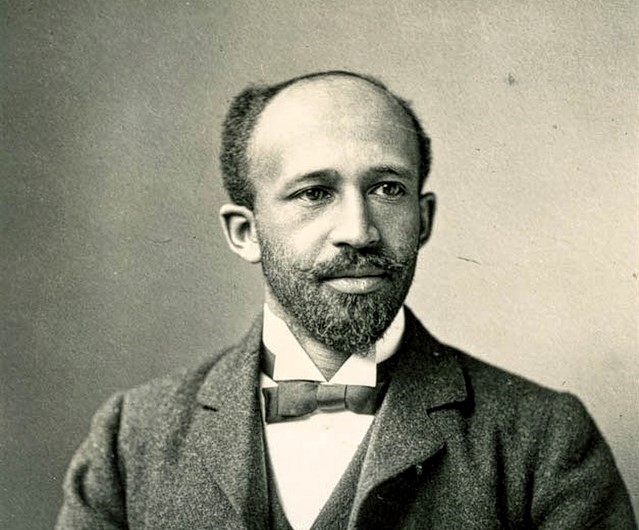An Academic Turned Journalist and Activist: W.E.B. Du Bois’ Twenty-Four Years as Editor of the Crisis: A Record of the Darker Races
There is a strong case to be made for regarding W.E.B Du Bois as the most influential African American intellectual of the first half of the twentieth century. Throughout his greatly active life of ninety-five years, Du Bois occupied such roles as academic, writer, civil rights activist, and journalist. A significant portion of these years were the twenty-four he spent serving as the editor of the official magazine of the National Association for the Advancement of Colored People (NAACP), The Crisis. Fundamental to his editorship was the prior twenty years of experience he had gained in education and academic work. Du Bois received his education at the universities of Fisk, Harvard, and Berlin, becoming the first African American to receive a PhD from Harvard in 1895. Du Bois went on to hold academic posts at the universities of Wilberforce, Philadelphia, and Atlanta until 1910; throughout the course of which he became one of the country’s most prominent opponents of racial discrimination, segregation, and lynching. It was in the effort to combat such practices that Du Bois and other allies decided in 1906 to found a national organization devoted to the cause of African American civil rights, the Niagara Movement. While short lived, the effort served as a precedent for the eventual establishment of a larger and more successful venture in 1909: the NAACP. Du Bois was also to be a founding member of this organization and was to take on the positions of Director of Publicity and Research and editor of the organization’s official organ, The Crisis: A Record of the Darker Races.
During his editorship of the journal, Du Bois would continue with many of the same preoccupations of his earlier academic career. For example, he continued to emphasize the need for a responsible and conscientious leadership by an African American elite; to whom he had earlier referred as the ‘’Talented Tenth.’’ He also continued to condemn the existence of Jim Crow segregation. In a February 1911 editorial, for example, Du Bois stressed the universal threat that discrimination represented, stating that ‘’if you can separate people by color, you can separate them by birth, by wealth, by ability and any accident. This once done and democracy is dead before Privilege.’’ Furthermore, Du Bois argued that, contrary to what apologists claimed about segregation, it did not alleviate race relations. Rather, the practice exacerbated them. The lynchings of the South only seemed to confirm Du Bois’ conclusion. Throughout his editorship, Du Bois would scrupulously document and condemn these horrifying occurrences. An example of the level of detailed attention that Du Bois brought to this issue can be observed in the RIAS’ microfilm collection of Du Bois’ papers in the form of a manuscript copy of an article that he had prepared for the February issue, entitled: “The Year’s Lynchings and Mob Murders 1917.’’ This source is a thorough testament to the scale of this vicious phenomenon throughout the country at that time.
Du Bois’ transition to journalism also afforded him the new opportunity to weigh in on more immediate and partisan politics, a significant example of which was Du Bois’ position during the 1912 presidential election. Du Bois decided to convince black voters to break with their tradition of supporting the Republican party and instead take their chances with the Democratic candidate Woodrow Wilson. As he argued in an August 1912 editorial, they should ‘’organize the black voters of each State in a solid phalanx’’ and deploy such a block as a potential swing vote in the upcoming election. In the end, Du Bois’ first foray into pragmatic politics was to be wholly unsuccessful, as the Wilson administration was to introduce segregation into the Federal government itself. Yet Du Bois did not wholly abandon pragmatic politics at this point and continued to explore such options as there were for black voters well into the uninviting circumstances of the 1920s. Such continued, if increasingly pessimistic, interest can be seen in his 1928 article devoted to the issue of black voter disfranchisement, ‘’The Possibility of Democracy in America.’’ Well displayed in this article is all of Du Bois’ immense grasp of detail, scrupulous attention to data, and powers of analysis, as befit his status one of the country’s premier sociologists.
By the onset of the 1930s, whatever remained of Du Bois’s pragmatism had given way to a near-thorough disillusion with the political process itself. Du Bois began to increasingly subscribe to more Marxist views on the bankruptcy of formal politics. He also came to combine such an orientation with what he deemed to be a necessary, albeit solely tactical acceptance of racial separation. Over the course of 1934, Du Bois was to provocatively articulate many of these ideas in the pages of The Crisis with such articles as ‘’Segregation’’, ‘’Segregation and Self-Respect’’, ‘’The NAACP and Race Segregation’’, and ‘’Segregation and the North’’ (the latter two of which are available in manuscript form at the RIAS). By even seriously considering any form of racial separatism, within the editorial page of the official organ of the NAACP, Du Bois was plainly placing himself on the path to conflict with the organization that, after all, championed itself as the nation’s premier opponent of racial discrimination. This, along with internal divisions within the leadership of the association itself, were to mark the end of Du Bois’ time with the NAACP and The Crisis by the end of 1934. While this may have been the end of one significant stage of Du Bois’ multifaceted life, it also merely marked the beginning of a further thirty years on his part of highly involved, influential, and contentious activity until his death in Accra, Ghana in 1963.
This piece was written using the following collection:
The Papers of W.E.B. DuBois, 1877-1965.
And the following microfilm archive:
The Papers of W.E.B Du Bois: Reel 82, Frames 778-1212.



